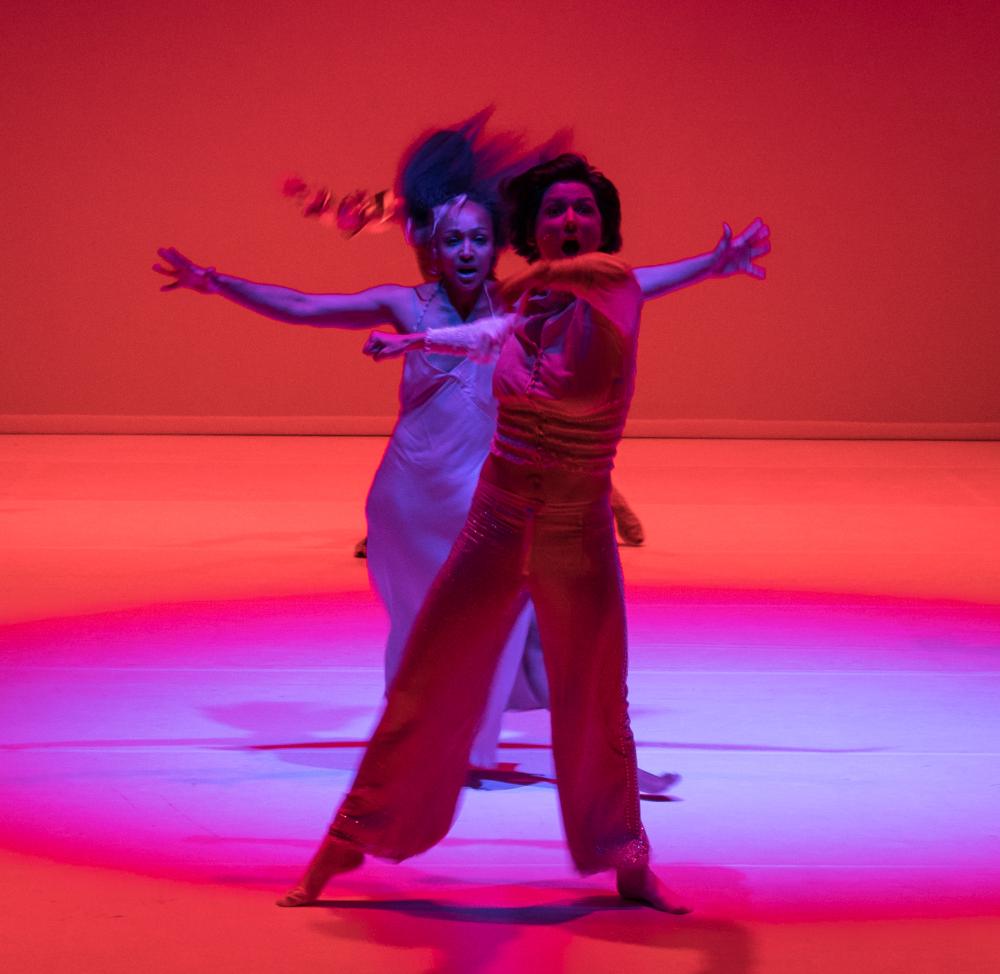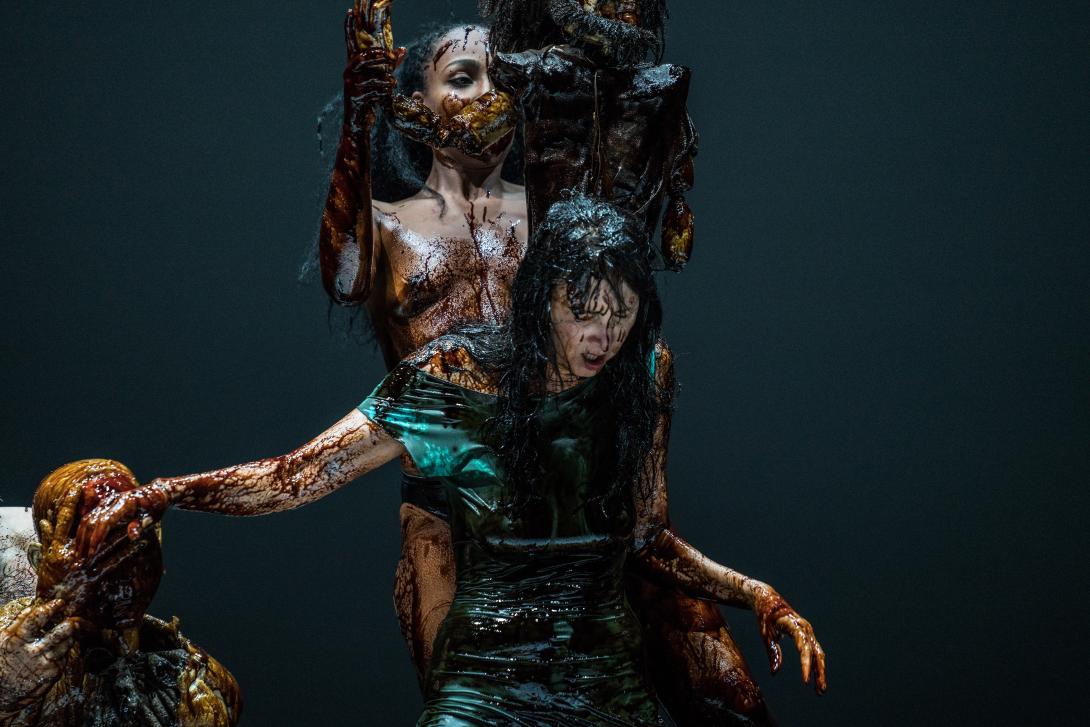| Mon | Tue | Wed | Thu | Fri | Sat | Sun |
|---|---|---|---|---|---|---|
|
1
|
2
|
3
|
4
|
5
|
6
|
7
|
|
8
|
9
|
10
|
11
|
12
|
13
|
14
|
|
15
|
16
|
17
|
18
|
19
|
20
|
21
|
|
22
|
23
|
24
|
25
|
26
|
27
|
28
|
|
29
|
30
|
31
|
|
|
|
|
Read More - Billy's Violence
Victor Afung Lauwers over de tekst van Billy’s Violence
Read the reflections by Victor Afgung Lauwers on the development of the text for Billy's Violence. You can read more about the performance and the credits here.
First of all, I want to say that I am not worried about any discrepancy in the audience’s knowledge of what Shakespeare’s tragedies mean or don’t mean. Virtually every edition of Shakespeare’s work is introduced with the necessary historical information that a canonical text requires. My interpretation of the text is emotional rather than intellectual. That interpretation presupposes the freedom of my work as a poet, which I do not have to explain before the text becomes accessible to the audience. But I understand that the audience’s experience is enriched by providing information. At the end of the day, we want to entertain.
Right before the start of the first lockdown, I was asked by my father, Jan Lauwers, to join him and Erwin Jans in investigating the tragedies. At the time I was in a rather bothersome situation, having just lost my own company. Jan’s original idea was to make a selection of the most brutal and violent scenes from the tragedies. He was inspired in this by Titus Andronicus, an early work by Shakespeare which, although included in the collected tragedies, is not originally by Shakespeare. It is categorized as inferior to the great tragedies in terms of quality. In the end, Erwin, Jan and I agreed that we would each tackle one tragedy before coming together a month later to see if a joint work method could emerge. The play I chose was Romeo & Juliet.
During my reading of Romeo & Juliet, I realized that I did not want to incorporate dramaturgically the essence of the play, i.e. the impossibility of love between Romeo and Juliet due to the political quarrel between their families. What I did find fascinating was the idea of having only the two title roles speak, though in a slightly modified version. I designed a method to reduce Romeo & Juliet in its entirety to a dialogue between both characters, without unnecessarily undermining the tension of the play in the process. When Jan and Erwin then read my text and I theirs, we concluded that, because of the personal and perhaps somewhat peculiar nature of my dialogue, they would withdraw as writers and I would take charge of the whole work.
While in the tragedies of the ancient Greeks it is the gods who are defied, in Shakespeare’s tragedies it is great men who are defied – army commanders, kings and princes. I have tried to stage, neither deities nor great men, but human beings. Especially human beings as lovers. The true violence of Billy is love. In the world of Shakespeare’s tragedies, war and cruelty are surrogates for unfulfilled love.
I was aware that I was not drawn to the idea of bringing only physical violence to the foreground. But there was another problem. Shakespeare’s tragedies are, as I said, war paintings. But at the time I felt unable to write about war.
One of Shakespeare’s most bombastic characters, Mark Antony from Antony & Cleopatra, can barely utter his lines and seems confused. I drew inspiration from articles on COVID describing puzzling cases of memory loss in COVID patients who talked of suffering from ‘brain fog’. COVID is relevant to the performance of Shakespeare since he too had to isolate himself during an epidemic. The parallel of the disease continues the theme of globalization that began with the voyages of discovery in Shakespeare’s time and that greatly excited the public’s imagination. Imperial violence was rampant at the time and the popular heroes of the day were men like Francis Drake.
I then consistently applied my method to every tragedy – with the exception of Coriolanus, Troilus and Cressida, and Timon of Athens. I found the last two rather weak. Coriolanus is a famous play, but the aim of my method, i.e. to distil a dialogue between a man and a woman from the original texts, was not very applicable to Coriolanus.
The biggest stumbling block was Lear. I believe that King Lear is the work of someone who is isolated and who, in his demonic inspiration, couldn’t care less whether the play is performable or not. Shakespeare was sheltering from an epidemic while thunderous weather was simultaneously raging over England. The language is particularly fierce and stormy. I spent days translating the work to understand it but I lost my way completely, to the point where I had to distance myself from the play. It is only at the very end of my research that I understood that Lear’s madness, which stems from nothing more than the realization that life means nothing, was best reflected in his relationship with his daughter Cordelia. Cordelia, however, originally hardly has anything to say. My feeling was that Lear is a chimera of Shakespeare himself and that Cordelia in turn is a hallucination of the old king. He sees her appear and clings to her, sick old man that he is. Thanks to this dreamy logic, I was still able to write something about the tragedy of King Lear and his daughter.
Another intervention was the omission of the character of Iago in the tragedy of Othello. By developing the relationship between Desdemona and Othello and leaving out all the other characters, Desdemona’s perspective, despite the brutality of the violence, suddenly came into focus. Ethnicity, incitement and jealousy lost all relevance, because it was about Desdemona, not about Othello or Iago. Feminicide is a deep and topical subject, and the notion that Othello’s killing of his wife was provoked by Iago is less so, in my opinion.
And so, I have tried to highlight in all the tragedies the violence and madness of intimacy in the Shakespearean world view. For me, there is a difference between Shakespeare the playwright and Shakespeare the philosopher-poet. I chose the latter. Thus, the revenge tragedy of Hamlet becomes the tragedy of Ophelia who succumbs to bullying and paternalism. The effect of desperation comes to the fore and is thus negated.
The main character of Julius Caesar is completely left out, although the secrecy and pressure placed by the senators on Brutus to kill his mentor weighs on him and is something that drives Portia to self-mutilation and suicide.
There is at times a considerable difference in quality between the tragedies. For Pericles, for instance, I chose to only reproduce the scenes between Pericles’s daughter, Marina, and the managers of a brothel on the verge of bankruptcy. But I couldn’t get much more out of the play. I also changed the roles, so that Marina is only addressed by the woman who wants to exploit her.
The same goes for Titus Andronicus. There is indeed much to be said about this play, and I understand why my father, who was looking for a way to bring Shakespeare to the stage at a time when the relevance of canonical authors is being questioned, was drawn towards it. Moreover, when making his previous play, All The Good, he had to face a certain dissatisfaction among some members of the audience regarding the violence of one particular scene. The scene is about the rape of Artemisia Gentileschi, which is rendered realistically. The question that Jan was concerned with at the time, I think, was how important it was to take an unvarnished approach. My view is that it is best not to put a gloss on cruelty, because in doing so one is turning away from the nature of history. So what remains of Titus Andronicus in Billy’s Violence is nothing more than the brutal rape and mutilation of a woman.
Like the romantics, I was moved by the gentle eroticism of Cymbeline and the tenderness of Imogen’s character. For me, her love for Posthumus – she does not know that the mutilated corpse she finds and weeps over is not actually his – is typical of Shakespeare’s impertinence. Love actually survives death even when the beloved is dead and all that remains of him is a torso with neither head nor limbs. That is when love becomes delirious and expresses its appreciation in its most honest and lucid form: the intangibility of loss.
Finally, I wanted to shed light on the aspect of language. Poetry – which belongs to neither fiction nor non-fiction but essentially connects to both facets through language – has much to do with magic. I wanted to create a certain conjuration through repetition and the refining of sentences, similar to the way we humans speak to each other and wish to dominate each other. For my adaptation of Macbeth, I wanted to suggest that Macbeth’s program gets bogged down, meaning he is no longer able to express himself properly. Lady Macbeth, the stronger character of the two, must ultimately suffer the same fate.
Victor Lauwers
Brussels, June 2021

